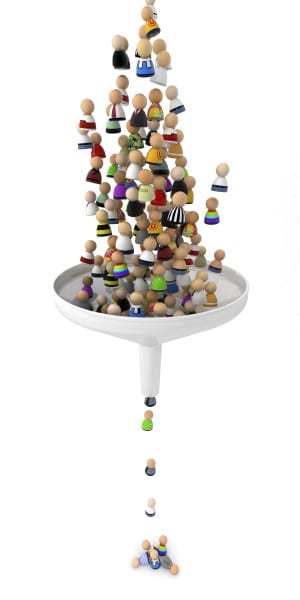Candidates blame applicant tracking software (ATS) for a dehumanizing approach to employee selection. Employers blame the software for high rates of candidate abandonment.
But an ATS is not to blame. Truth be told, many employee screening and selection processes were dehumanized long before ATS. Many assumed candidate screening software was supposed to fix it. But as the saying goes: garbage in, garbage out. In most cases, it’s not the software’s fault – it’s the people who implement and use it. And that has resulted in the continuation and growth of bad candidate experiences.
It’s not just the bad experience that matters but the lackadaisical approach companies take to address it. According to a recent study by CareerBuilder®, 82% of employers think there’s little to no negative impact on the company when a candidate has a bad experience during the hiring process. The reality is quite contrary. The majority of candidates do not take poor treatment lying down.
Here’s one example of an irate applicant who responded to an article I wrote about a bad candidate experience with applicant screening software:
“… after spending two hours trying to navigate [company’s] applicant software, which requests a resume upload then asks applicants to pretty much duplicate that same resume by filling in each detail, then does not save the filled in text even when applicants click on save, dumps you back to the beginning, and so on, I’m done bothering with dehumanizing job applicant software for good. Hiring is human encounter. Bring back the human factor and stop demeaning prospective employees by forcing crap software developed by Asperger’s-addled little boys on them.”
It’s easy for both applicants and HR to cast blame on the dehumanizing nature of automated applicant screening software. I agree with the respondent – “hiring is a human encounter.” It’s simple – no software is so sophisticated – yet – to discern between experience and talent, between credible and bull****. People still need to be directly involved. But that doesn’t mean a significant portion of the sourcing and recruiting process can’t be improved and automated.
The reasons for employers to automate data collection are compelling and negate the excuses given to avoid it. Quite simply the manpower required to post to multiple job boards and then sift through hundreds if not thousands of unqualified applications received is just overwhelming. It’s just a waste of time, resources, and ultimately money that no company can afford. By using screening questions with applicant screening software, recruiters can easily select out the higher potential candidates from those that don’t meet basic requirements. Once the unqualified or higher risk applicants are removed from consideration, human interaction is essential. In other words, automation and technology don’t eliminate the need for people. It allows them to find top talent more quickly and then focus on candidates who are most likely to succeed.
To avoid turning off candidates like the one I mentioned earlier, here’s a short list of 4 mistakes to avoid that companies often make in using applicant tracking software.
- Don’t allow the software to eliminate the human factor. Ideally, candidate screening software improves the productivity and effectiveness of a recruiter. It should become an extension of his or her work. It should help identify and engage qualified candidates faster and adapt to recruiting conditions in real-time through source data analysis. It should free up recruiters and hiring managers to engage and communication more often with most likely to success candidates. Like many other jobs, automation forces employees to divert their attention from manual tasks to knowledge work…and many old-school employees don’t like that. (They want to get paid for doing things, not thinking!) Applicant screening software helps recruiters focus on their task at hand – attracting and acquiring qualified workers – and that’s communicating with candidates and minimizing mindless tasks and paperwork.
- Don’t allow the software to dehumanize the candidate experience. Applicant tracking software isn’t “dehumanizing” – the people who implement and use it make it so. The software should not dictate the workflow or communication – it should facilitate a better experience for both employer and candidate. A good applicant tracking system allows recruiters and managers to personalize each interaction with the candidate. The problem is most often the recruiters and HR rely on default settings to shape and manage the recruiting-screening-selection process. Recruiting talent these days can’t be put on auto-pilot.
- Don’t forget to modernize the application process. Just because the applicant screening software allows a company to request a resume and all sorts of other information doesn’t mean it’s the best practice to collect. Use an application or request a resume – not both. Keep fill in the blank questions to a maximum of 10 to 15. Ask candidates to provide essential information to help you make an initial determination. If they look promising, then ask for more.
- Don’t assume every applicant is using a desktop computer. Surveys estimate that between 50 and 90% of applicants start a job search on a mobile device. If a jobseeker can’t find, read, or apply to your job posting on a smartphone or tablet, they will abandon the application or ignore you completely.
A good candidate experience can have the reverse effect too: 69% of candidates surveyed by CareerBuilder are more likely to buy from a company to which they’ve applied if they’re treated with respect throughout the application process. Sixty-seven percent are likely to do the same if they receive consistent updates throughout the recruitment process. Applicant tracking software when implemented correctly can help improve the candidate experience and fill more positions faster with qualified workers.

